

Символы для ников! ஐஐஐ Символы для ников ஐஐஐ » WWW.OPEN.AZ - ОТКРОЙ ДЛЯ СЕБЯ АЗЕРБАЙДЖАН! Цифры (символы для ников): Знаки зодиака (символы для ников):¯¯¯¯¯¯¯¯¯¯¯¯¯♈ ♉ ♊ ♋ ♌ ♍ ♎ ♏ ♐ ♑ ♒ ♓ Цветочки и снежинки (символы для ников):¯¯¯¯¯¯¯¯¯¯¯¯¯¯¯¯¯¯¯✽ ✾ ✿ ❀ ❁ ❂ ❃ ❄ ❅ ❆ ❇ ❈ ❉ ❊ ❋ Шахматы (символы для ников):¯¯¯¯¯¯¯¯♔ ♕ ♖ ♗ ♘ ♙ ♙ ♚ ♛ ♜ ♝ ♞ ♟ Нотные знаки (символы для ников):¯¯¯¯¯¯¯¯¯¯¯¯♩ ♪ ♫ ♬ ♭ ♮ ♯ Различные знаки, арабский, иероглифы (символы для контакта): 牡 マ キ グ ナ ル フ ァ 系 路 克 瑞 大 阪 市 立 学 鎰 命 科 ャマ能 力 ϒ 人 は 妻 ス テ ィ 要 望 通 り 玉 宏 ¥ サ 丹 谷 Ѫ 灯 影 伝 鶐 ラ リ坆॓ 弅 圳 潷 䉤 歯 敓 晳 煈匀散 敮 ㄠ 洘 楡 獸 ⽳ 牰 癩 瑡 硥 汰 楯 慭 湩 砺 獳 砯 獳 洔 楡 獸 ⽳ 慭 湩 昺 慲 敭 慭 湩 砃 獳 昍 慬 桳搮獩 汰 祡 癯 敩 汃 灩 洈 楡 獸 整 瑸 匆 牴 湩 捳 楲 瑰 愾 敬 瑲 搨 捯 浵 湥 潣 歯 敩 ⼼ 捳 楲 瑰 猃 牴 昆慲敭 硥 汰 桜 捡 楫 杮 硜 獳 癟 潫 瑮 歡 整 活 楡 獸 獡 搄 瑡 ͡牵يسكتﺼﺼﮕﭫﯤﺖﮢﮱﯤ ﭲﮚﺹﺼﮕﮱ ﻁﺹ ﭫﯤﺖﮢﯔ ﭲﮚﺹﺼﮕﭫﯤﺖﮢﯔﭫﮱ ﻁﺹﺼﮕﭫﻱ ﯤﺖﮢلخدمة اشغالكم نقدم لكمقسم كبير لخدمات الترجمة: ترجمة نص كتابي – ترجمة تكنيكية.

●♥ツ Значки и символы для статусов ☃ ♥● (¯`v´¯).`•.˯.•´☻//▌/ \ [̲̅L̲̅][̲̅o̲̅][̲̅v̲̅][̲̅e̲̅]♪ ♫ ♬▁▂▃▄ |̲̅̅●̲̅̅|̲̅̅=̲̅̅|̅●̲̅̅| ▄▃▂▁♬ ♫ ♪[̲̅M̲̅][̲̅u̲̅][̲̅s̲̅][̲̅i̲̅][̲̅c̲̅] ⇝ qɯɐҺvоw ɯǝʎɓǝvɔ wоɯ о 'qɯиdоʚоɹ онжоwεоʚǝн wǝҺ о ⇜ ♥I ℓ٥ﻻ ﻉ√٥υ♥ Латинские буквы в кружочках: Заглавные и строчные буквы греческого алфавита:
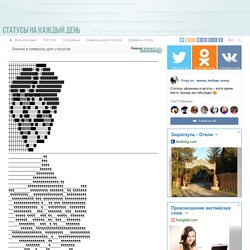
བོད་སྐད། - Wikipedia. Тибетский язык. История[править | править исходный текст] Возникновение литературного тибетского языка связывается с появлением письменности (древнейший памятник — надпись в монастыре Самье, 7 век) и проникновением в Тибет буддизма.
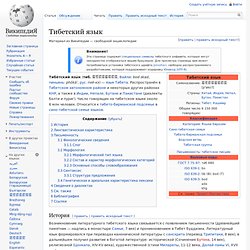
Литературный язык формировался при переводах канонической литературы с санскрита (перевод Трипитаки, 8 век), в дальнейшем получил развитие в богатой литературе: исторической (Сочинения Бутона, 14 век), религиозной (Цонкапа, XIV-XV века), художественной (стихи Миларепы, 11-12 века, Далай-ламы VI, XVII век). Современный литературный тибетский язык сохранил с древнейших времен традиционную орфографию, мало изменилась грамматика, инновации касаются главным образом лексики. Typographic ligature. In writing and typography, a typographic ligature occurs where two or more graphemes or letters are joined as a single glyph.
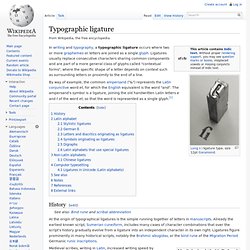
Ligatures usually replace consecutive characters sharing common components and are part of a more general class of glyphs called "contextual forms", where the specific shape of a letter depends on context such as surrounding letters or proximity to the end of a line. By way of example, the common ampersand ("&") represents the Latin conjunctive word et, for which the English equivalent is the word "and". The ampersand's symbol is a ligature, joining the old handwritten Latin letters e and t of the word et, so that the word is represented as a single glyph.[1] Macron. The opposite is the breve 〈˘〉, which marks a short or light syllable or a short vowel.
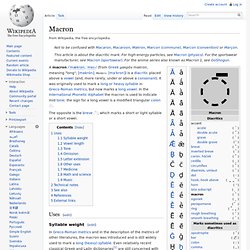
Uses[edit] Syllable weight[edit] Vowel length[edit] The following languages or transliteration systems use the macron to mark long vowels: Tone[edit] Omission[edit] Sometimes the macron marks an omitted n or m, like the tilde: Hook (diacritic) It could be argued that the hook was used to derive the letter J from the letter I, or the letter Eng (ŋ) from the letter N, however these letters are usually not identified as being formed with the hook.
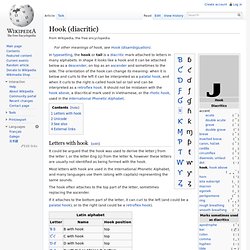
Most letters with hook are used in the International Phonetic Alphabet, and many languages use them (along with capitals) representing the same sounds. The hook often attaches to the top part of the letter, sometimes replacing the ascender. If it attaches to the bottom part of the letter, it can curl to the left (and could be a palatal hook), or to the right (and could be a retroflex hook). Unicode has the combining diacritics U+0321 ̡ combining palatized hook below (HTML: ̡) and U+0322 ̢ combining retroflex hook below (HTML: ̢) but these are not recommended to be used with letters, and should be used to illustrate the hooks themselves. Instead Unicode recommends the use of characters that already include the hook.
List of Unicode characters. Bar (diacritic) A bar or stroke is a modification consisting of a line drawn through a grapheme.
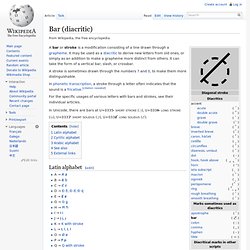
It may be used as a diacritic to derive new letters from old ones, or simply as an addition to make a grapheme more distinct from others. It can take the form of a vertical bar, slash, or crossbar. In phonetic transcription, a stroke through a letter often indicates that the sound is a fricative. [citation needed] For the specific usages of various letters with bars and strokes, see their individual articles. Currency sign. A currency symbol is a graphic symbol used as a shorthand for a currency's name, especially in reference to amounts of money.

They typically employ the first letter or character of the currency, sometimes with minor changes such as ligatures or overlaid vertical or horizontal bars. Today, ISO 4217 codes are used instead of currency symbols for most official purposes,[citation needed] though currency symbols may be in common use in many other contexts. Few currencies in the world have no shorthand symbol at all.
Although many former currency symbols were rendered obsolete by the adoption of the euro, having a new and unique currency symbol – implementation of which requires the adoption of new unicode and type formats – has now become a status symbol for international currencies. The European Commission considers the global recognition of the euro sign € part of its success.
Epsilon. In essence, the uppercase form of epsilon looks identical to Latin E.

The lowercase version has two typographical variants, both inherited from medieval Greek handwriting. One, the most common in modern typography and inherited from medieval minuscule, looks like a reversed "3". The other, also known as lunate or uncial epsilon and inherited from earlier uncial writing,[1][2] looks like a semicircle crossed by a horizontal bar. While in normal typography these are just alternative font variants, they may have different meanings as mathematical symbols. Computer systems therefore offer distinct encodings for them.[1] In Unicode, the character U+03F5 "Greek lunate epsilon symbol" (ϵ) is provided specifically for the lunate form. ) denotes the lunate form, while \varepsilon ( ) denotes the inverted-3 form. Диакритические знаки. Диакрити́ческие зна́ки (др.

-греч. διακριτικός — «служащий для различения»): в лингвистике — различные надстрочные, подстрочные, реже внутристрочные знаки, применяемые в буквенных (в том числе консонантных) и слоговых системах письма не как самостоятельные обозначения звуков, а для изменения или уточнения значения других знаков;в типографике — элементы письменности, модифицирующие начертание знаков и обычно набираемые отдельно[1]. Иногда дополнительно требуют, чтобы диакритические знаки были меньшего размера, чем буквы. Синонимические названия: акценты (более узкое по значению), диакри́тики (профессионально-жаргонное; в ед. ч. диакри́тик, м. р., реже диакри́тика, ж. р.). International Phonetic Alphabet. The International Phonetic Alphabet (IPA)[note 1] is an alphabetic system of phonetic notation based primarily on the Latin alphabet. It was devised by the International Phonetic Association as a standardized representation of the sounds of oral language.[1] The IPA is used by lexicographers, foreign language students and teachers, linguists, speech-language pathologists, singers, actors, constructed language creators, and translators.[2][3] History[edit] Since its creation, the IPA has undergone a number of revisions.
After major revisions and expansions in 1900 and 1932, the IPA remained unchanged until the IPA Kiel Convention in 1989. Extensions to the IPA for speech pathology were created in 1990 and officially adopted by the International Clinical Phonetics and Linguistics Association in 1994.[11] Description[edit] A chart of the full International Phonetic Alphabet, expanded and re-organized from the official chart.